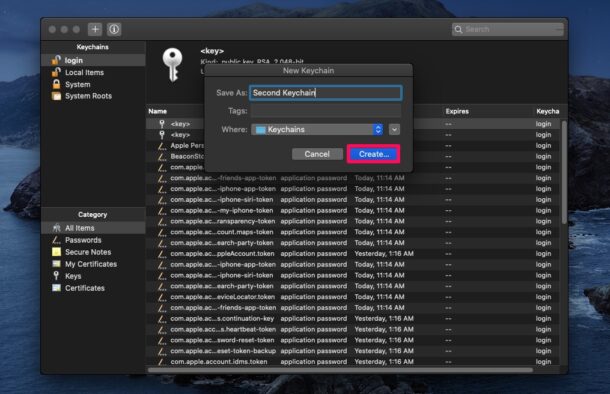

If you did not check the box this prompt will not appear. I need to access the keychain and read passwords from it when im SSH:ed on, and i get 'User interaction is not allowed' etc.

If you checked the optional Let me specify key pair information checkbox in step 4 above, you will be prompted to choose the Key Size and Algorithm from the drop-down menus. Select key size and algorithm (optional).certSigningRequest, choose a location to save it, and click the Save button. In the dialog box that appears, give the CSR a filename with the extension. If you want to change the default key size and algorithm for the key pair (optional), check the Let me specify key pair information checkbox. Choose to specify key size and algorithm (optional).

Then, enter the Fully Qualified Domain Name (FQDN) of the website this certificate will protect in the Common Name field (depending on the certificate type, this may be a wildcard, such as *.). In code, you can enumerate certificates using SecItemCopyMatching with kSecClasskSecClassCertificate and kSecMatchLimitkSecMatchLimitAll. In the Certificate Assistant window that opens, enter your email address in the User Email Address field. At the command line, I think you could do security find-certificate -a -p and then split up the returned PEM-encoded certificates to feed them to openssl x509 -inform PEM.
#SYSTEM KEYCHAIN MAC COMMAND LINE PASSWORD#
Select Keychain Access > Certificate Assistant > Request a Certificate From a Certificate Authority… from the menu. One of my favorite command line utilities is Guillermo Rauchs wifi-password, a utility that allows you to get a saved password for the wifi network youre presently connected to (to share with colleagues or creeper in the cafe youre in). Open the Keychain Access application, located at /Applications/Utilities/Keychain Access.app. To generate a CSR in macOS Keychain Access you’ll need to: To order your certificate from SSL.com, you need to generate a Certificate Signing Request (CSR).


 0 kommentar(er)
0 kommentar(er)
